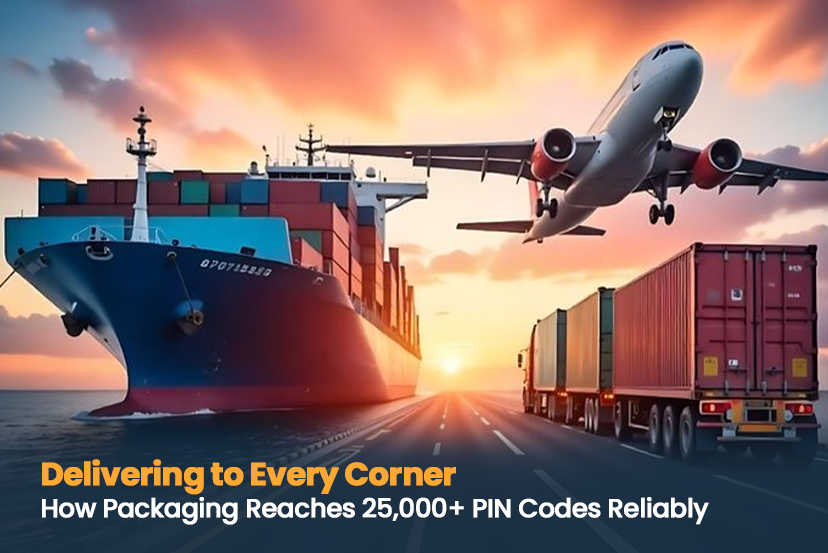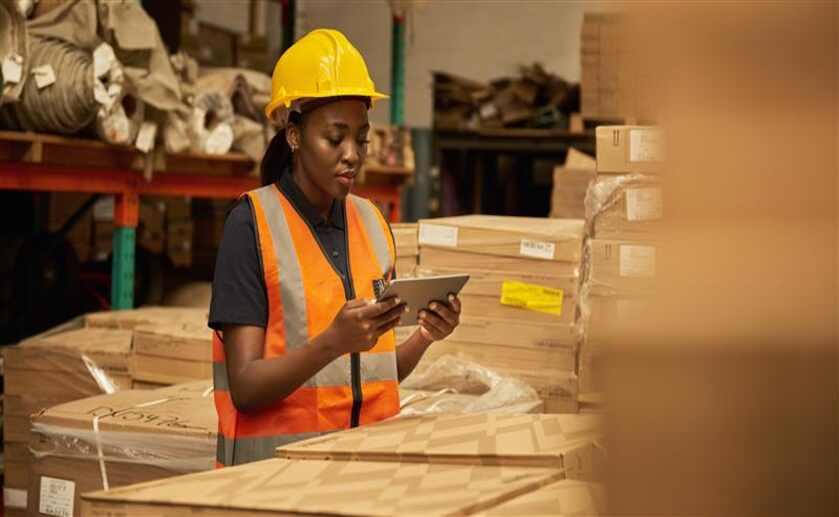Delivering to Every Corner: How Packaging Reaches 25,000+ PIN Codes Reliably

Delivering to Every Corner: How Packaging Reaches 25,000+ PIN Codes Reliably
Anyone who’s shipped a product across India knows the drill. Delivering across the country isn’t just about logistics-it’s a test of durability, planning, and real-world problem solving.
You’re not just shipping to metros with paved roads and proper addresses. You’re also reaching small towns, far-flung villages, coastal zones, hilly terrains, and places where the weather can flip in a day.
And somehow, some brands are doing this consistently-reaching over 25,000 PIN codes with minimal damage, delays, or customer complaints. The not-so-secret weapon? Smarter, more reliable packaging.
The Delivery Struggles No One Talks About
Let’s be real. Delivery failures are rare because the product didn’t leave the warehouse. The problems happen in transit.
Packages get dropped. They ride on bumpy roads in overloaded trucks. They sit in the rain outside a local depot. Labels peel off. Boxes cave in. Items shift and break.
Now imagine the same product has to survive this across 25,000 different locations. One-size-fits-all doesn’t work. And that’s exactly why packaging needs to be purpose-built for scale, diversity, and chaos.
How Packaging Makes (or Breaks) Nationwide Delivery
If you want to ship anywhere and everywhere in India without holding your breath every time a parcel leaves your warehouse, your packaging has to be more than just functional. It has to be dependable.
Strong outer packaging matters. Corrugated boxes with the right ply strength, protective layers at pressure points, and boxes that can handle stacking-these aren’t luxuries. They’re essentials when your shipment might be at the bottom of a truckload headed to a Tier 3 town.
Internal protection isn’t about stuffing in bubble wrap and hoping for the best. It means using inserts, trays, or padding that hold the product firmly in place, even if the box flips upside down or gets dropped from waist height.
Right-sizing also plays a big role. Oversized boxes invite damage because items move around too much. Undersized ones offer no protection. Packaging that’s tailored to the product size and shape improves both safety and efficiency.
Moisture control is another big one. Monsoon season doesn’t care about your delivery timelines. And in coastal areas, even a light drizzle or high humidity can mess with packaging adhesives, labels, or the product itself. Waterproof layers, sealable polybags, and humidity-resistant materials go a long way here.
Even your tape matters. Regular tapes may come loose in transit, especially in dusty or humid conditions. High-quality packaging tapes that seal tightly are a small investment that prevents big problems.
What Reliable Delivery Looks Like Behind the Scenes
Brands that consistently deliver across the country without issues do a few things differently.
They test their packaging against real-world scenarios. Not just lab tests, but actual shipping routes. They drop boxes, stack them, expose them to rain, and leave them in the sun. If the packaging survives that, it’s ready for the real world.
They don’t use the same packaging for every product. Electronics get custom foam inserts. Cosmetics get snug boxes to avoid rattling. Glassware gets cushioning that doesn’t shift around. The packaging adapts to the product-not the other way around.
They review and update packaging regularly. As the logistics network evolves, delivery partners change, and customer volumes grow, so should the packaging. What worked two years ago might be costing you returns today.
They also work with packaging partners who understand pan-India shipping. Vendors who know what a 7-day journey to Northeast India does to a cardboard box are better equipped to suggest the right materials and formats.
Common Delivery Issues Packaging Can Solve
Damaged goods aren’t just bad luck-they’re usually the result of under-engineered packaging. Weak boxes, loose interiors, or poor labeling lead to replacements, complaints, and refunds.
A wet label can mean a parcel gets lost in the system or is sent back. That’s a packaging issue, not a logistics one.
Melted or deformed products during summer? That’s preventable with heat-resistant or insulated packaging.
Pieces missing from the box? Usually because of movement inside or torn external packaging. Proper fitments and secure sealing solve that.
If you’re tracking a high rate of delivery failures, there’s a good chance packaging is playing a bigger role than you think.
What Scaling Delivery Really Involves
Reaching every corner of the country isn’t just about getting more orders or more vehicles. It’s about building systems that can scale without breaking. Packaging is one of the easiest systems to get right-and one of the costliest to ignore.
Good packaging reduces the need for repacking at hubs, speeds up sorting, prevents damage in manual handling, and minimizes returns. That means faster deliveries, lower costs, and happier customers-even in remote PIN codes.
Brands like Moglix Business treat packaging as a strategic function, not just a cost, tend to scale more smoothly and with fewer surprises.
Building Packaging That Reaches Anywhere
If you want to consistently deliver across 25,000+ PIN codes, the packaging has to be:
- Strong enough to survive real-world transit, not just warehouse handling
- Sized correctly so it’s efficient for both shipping and storage
- Resistant to rain, dust, and heat during long journeys
- Securely sealed and clearly labeled for fast, error-free sorting
- Adaptable by product category and region
This doesn’t mean overpacking or overspending. It means thinking smart and planning for real delivery conditions, not ideal ones.
Final Word
Smart packaging doesn’t just protect your product. It protects your reputation, your delivery timelines, and your bottom line.
Reaching 25,000 PIN codes isn’t impossible. But doing it consistently, without damage or delays, means treating packaging as part of the delivery system, not just the box it ships in.
When done right, packaging becomes your delivery partner. Silent, reliable, and always on time.
2025 Procurement Outlook for Primary Packaging for CPOs

2025 Procurement Outlook for Primary Packaging for CPOs
The procurement of primary packaging materials such as polybags, VCI bags, food trays, and glass bottles faced significant cost pressures in 2024.
Key factors driving these pressures included raw material price fluctuations, regulatory compliance requirements, and rising energy costs.
As we step into 2025, the question arises: What challenges and opportunities lie ahead for Chief Procurement Officers (CPOs)?
Key Factors Impacting Primary Packaging Procurement
1. Raw Material Costs
Paper and Cardboard:
The growing demand for sustainable packaging is driving up the cost of paper-based materials.
Shortages in pulp supply, coupled with increasing transportation expenses, are expected to put additional pressure on prices in 2025.
Plastics:
Prices of virgin and recycled plastics remain influenced by crude oil market dynamics and recycling infrastructure.
With stricter regulations on single-use plastics, companies are likely to face increased compliance-related expenses.
Metal and Glass:
Aluminum, steel, and glass production processes are highly energy-intensive, leaving them vulnerable to energy price volatility. Ongoing fluctuations in global energy markets are expected to further impact procurement costs for these materials.
2. Compliance
Regulatory Compliance:
Adhering to sustainability standards, such as Extended Producer Responsibility (EPR) and carbon taxation, involves higher certification costs and redesign requirements. These regulations aim to reduce environmental impact but increase operational complexities.
Circular Economy Initiatives:
The shift towards reusable packaging and investments in recycling programs align with sustainability goals but demand significant upfront financial investment. Companies adopting these initiatives must carefully plan for long-term returns.
3. Customization and Design
Innovative Designs:
Packaging innovations, including custom shapes, multi-material combinations, and advanced graphics, enhance consumer appeal but add to production costs. These designs often require specialized production capabilities, driving expenses higher.
Digital Printing Technologies:
Digital printing enables greater flexibility and personalization for packaging solutions.
However, it can increase costs, particularly for short production runs, when compared to traditional methods.
4. Technological Integration
Smart Packaging Features:
Technological advancements in packaging, such as QR codes, RFID tags, and temperature indicators, are gaining traction.
Although these features enhance functionality, they also increase production and material costs, necessitating a clear cost-benefit analysis.
5. Volume and Batch Sizes
Economies of Scale:
Large production volumes typically result in greater cost efficiency, whereas smaller, customized orders lead to higher costs.
Balancing production scales with market demand will be critical for procurement planning.
Demand Volatility:
Shifts in consumer demand, driven by seasonal trends or global events, continue to create uncertainty in procurement strategies.
Companies must focus on building agile processes to mitigate risks associated with demand fluctuations.
Transportation Costs:
Rising fuel prices and persistent global supply chain disruptions are driving up logistics expenses for raw materials and finished packaging. Efficient transportation planning and diversified sourcing strategies will remain crucial for cost control.
Conclusion
2025 is set to bring both challenges and opportunities for the procurement of primary packaging materials.
To navigate this evolving landscape, CPOs must leverage insights from 2024, implement innovative solutions, and fortify their supply chains.
For a detailed projection and actionable insights, access our comprehensive whitepaper today.
Mail your inquiries to info@moglixbusiness.com.



